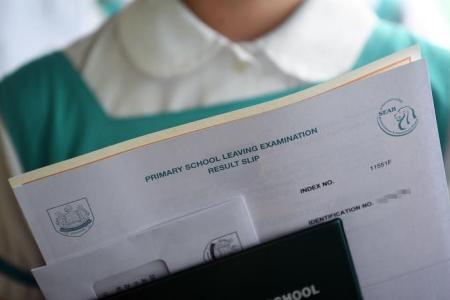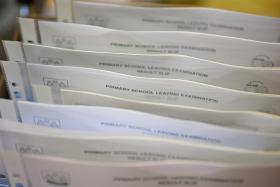ST post-PSLE webinar answers questions on school choice, full subject-based banding
Parents and pupils looking for the perfect secondary school after the Primary School Leaving Examination (PSLE) received tips and advice from principals at a webinar on Nov 12. The Straits Times Smart Parenting post-PSLE webinar covered topics such as school choice, subject-based banding and the new scoring system behind the PSLE. Here are some key questions and answers:
Q: Are pupils scored on a bell curve at PSLE and are marks moderated to make sure a specific number of pupils get a certain grade?
A: No, a standard distribution, or a bell curve, is not used in any national examinations in Singapore, said the Ministry of Education’s (MOE's) director of schools Tan Chen Kee.
“The infamous bell curve, we must ring the death knell for the bell curve,” she said, adding that the performance of every cohort naturally falls along a normal distribution curve. MOE does not adjust grades to force fit the kids into a curve.
Q: Why has MOE made “school choice” count for more under the new posting scheme?
A: In the new system, if pupils get the same PSLE score, there are three tie-breakers to determine which child gets priority in this order – citizenship status, choice order of schools and computerised balloting. Choice order is a new addition.
The change was made because MOE wants parents to shift away from an infatuation with the top choice and take a broader scan of all the schools that could potentially develop their children to their fullest potential, said Mrs Tan.
Noting that this may not be the school with the lowest entry point, she encouraged parents to go to the schools’ open houses to sense the culture; talk to students and teachers; listen to the principal; and check its programmes.
Q: What are some of the benefits of full subject-based banding?
A: Ms Leah Aw, principal of Temasek Secondary School, said one of the main benefits is the confidence students develop when they realise they can take some subjects at a higher level. “I even have N(T) students who can do mother tongue at the Express level, so that’s two levels up, and they do okay,” she said.
N(T) refers to the Normal (Technical) course.
This has an impact on other areas of a student’s life, she said. “This confidence shapes them to be willing to take up leadership positions. They don’t see themselves as being any less than other students,” said Ms Aw, adding that some students who move to take subjects at a high level may sometimes do better than those who enter after PSLE because they could be late bloomers.
Q: How is full subject-based banding different from the old system of having students in Express or Normal courses?
A: In the past when students were able to take a subject at a higher level, they would have to transfer to a different course, for example, from Normal (Technical) to Normal (Academic), or what is known as a lateral transfer, Ms Aw said.
But many did not want to do so as they were worried about having to transfer from N(T) to N(A) for all subjects. And they did not want to leave their classmates. “So, this limits their academic potential because they could have done better in some subjects.”
With full subject-based banding, students who want to take a subject at a higher level would just need to go to a different class for that subject. “For the six common curriculum subjects, they can still see their friends. So it allows them the freedom and flexibility, and a lot of them are much more willing to take it up,” she added.
Q: How is class allocation done? What are the benefits in having mixed form classes?
A: Mr Lee Han Hwa, principal of St Andrew’s Secondary School, said students from all three courses are mixed for the form classes and take the common curriculum together, for instance, subjects such as art and physical education. Since his school introduced full subject-based banding, he has seen more friendships being formed.
He believes this is the way to go. “I see many merits. In class dialogues with the boys, they told me all are brothers since we are an all-boys school. In fact, our Sec 3 form classes this year have moved from Sec 1 to Sec 3 together,” he said.
Q: What should parents look out for in the first year to see if their child is thriving in secondary school?
A: Mr Loh Chih Hui, principal of Bowen Secondary School, said one indicator would be how much your child looks forward to going to school. It shows that he or she is happy and motivated, and has positive peer relationships as well.
Students also thrive in an environment where they are able to exercise choice and do the things they are interested in. They may also experience various successes, no matter how big or small. “I think that these are all good signs that your child is thriving in the new school environment,” he said.
Swiss Cottage Secondary School principal Sherwin Cheng said parents could look out for incremental improvements during the year. If they are motivated, their passion for school activities will show, no matter how tired they are.
“On the flip side, if you find their energy level is low or they don’t want to go to school, that’s when alarm bells will go off,” he added.
Mr Cheng also advised parents not to define their child’s performance solely by his or her academic achievement. “As long as they are making improvements on a yearly basis, I think that’s good enough,” he said.
Get The New Paper on your phone with the free TNP app. Download from the Apple App Store or Google Play Store now


